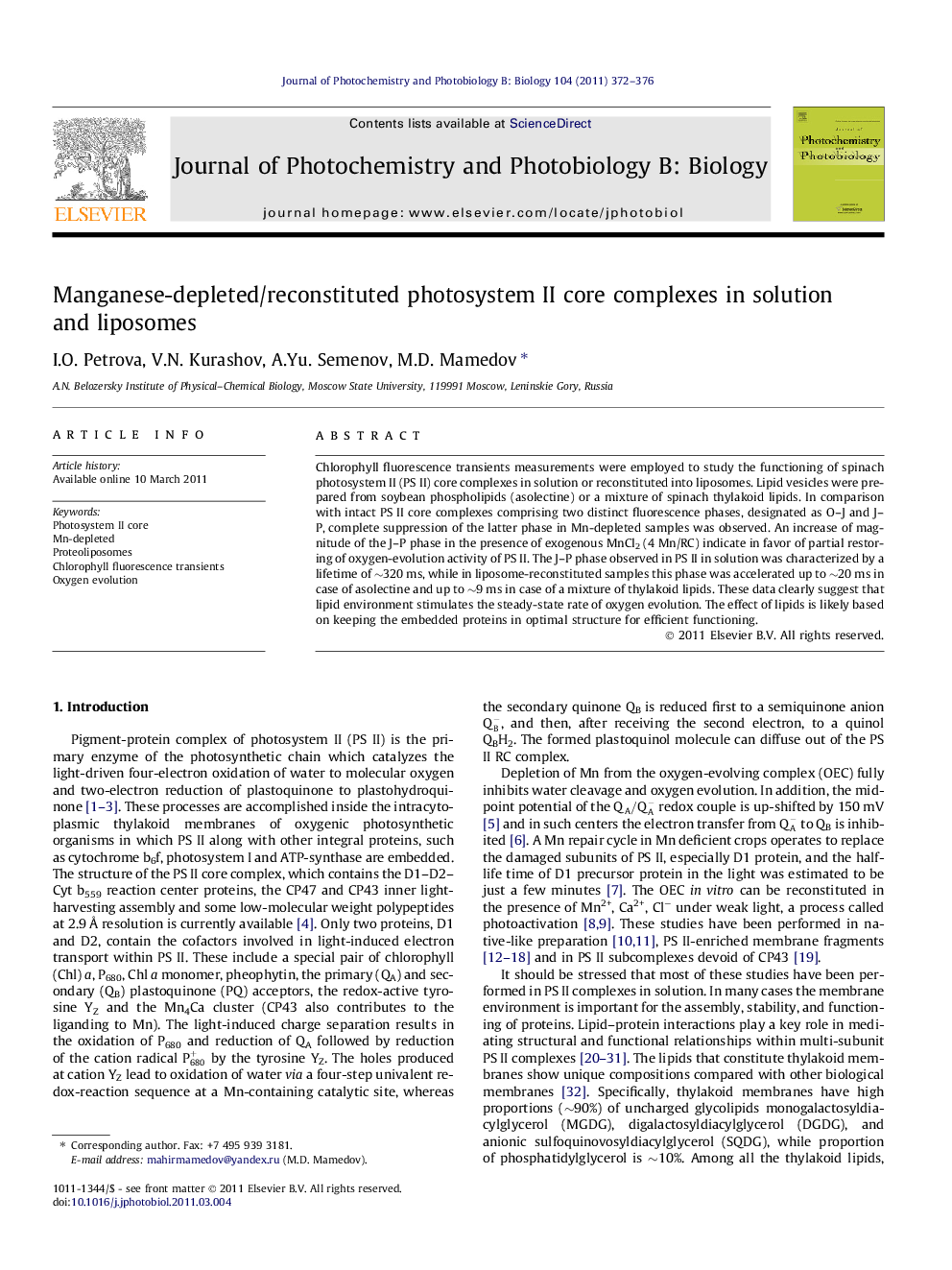| Article ID | Journal | Published Year | Pages | File Type |
|---|---|---|---|---|
| 29645 | Journal of Photochemistry and Photobiology B: Biology | 2011 | 5 Pages |
Chlorophyll fluorescence transients measurements were employed to study the functioning of spinach photosystem II (PS II) core complexes in solution or reconstituted into liposomes. Lipid vesicles were prepared from soybean phospholipids (asolectine) or a mixture of spinach thylakoid lipids. In comparison with intact PS II core complexes comprising two distinct fluorescence phases, designated as O–J and J–P, complete suppression of the latter phase in Mn-depleted samples was observed. An increase of magnitude of the J–P phase in the presence of exogenous MnCl2 (4 Mn/RC) indicate in favor of partial restoring of oxygen-evolution activity of PS II. The J–P phase observed in PS II in solution was characterized by a lifetime of ∼320 ms, while in liposome-reconstituted samples this phase was accelerated up to ∼20 ms in case of asolectine and up to ∼9 ms in case of a mixture of thylakoid lipids. These data clearly suggest that lipid environment stimulates the steady-state rate of oxygen evolution. The effect of lipids is likely based on keeping the embedded proteins in optimal structure for efficient functioning.
► Fluorescence measurements were employed to study Mn-depleted photosystem II. ► The J–P phase in PS II in solution was slower than in liposome-reconstituted samples. ► We suggest that lipid environment stimulates the steady-state rate of O2 evolution.
